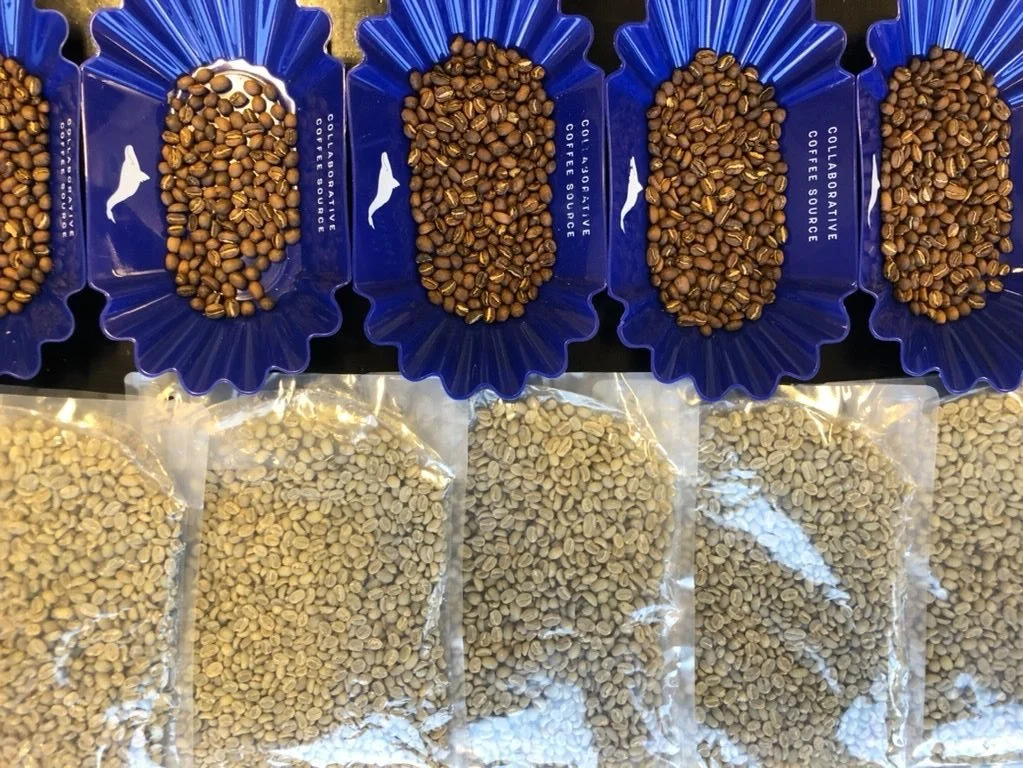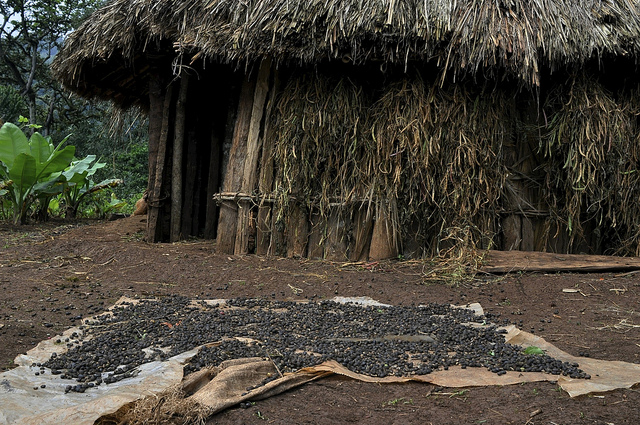Melanie Leeson and Heleanna georgalis
The internet has done wonders for coffee. It’s brought the stories of producers to life, revealing the extraordinary work that they do. It’s spread the message of how amazing good coffee can taste, making words like “single origin” and “acidity” far more common. It’s enabled people at origin to reach new markets and receive better prices for their product.
But has all this gone too far? Do we now sell specialty coffee or do we sell a like-inducing photo? And is the time and effort that producers put into marketing themselves for specialty – allowing origin visits, teaching purchasers about their work – being adequately repaid?
Two coffee professionals, one exporter and one importer, share their views on the state of specialty in Ethiopia.
Are we helping communities by selling their coffee – or are we selling communities to help our coffee businesses?
The Exporter Point-of-View: Heleanna
Heleanna Green coffee exporter, farmer, and roaster; one half of Moplaco P.L.C.
My coffee journey has been one of disappointment through to excitement and, now, unease.
As an exporter from Ethiopia, I’m always striving to find the best coffee possible within the limitations that the current auction system (Ethiopian Commodities Exchange, ECX) imposes. Whenever I find great coffee, I get really excited and I hope that my partners will feel the same.
We’re all working towards the same goal: producing a delicious cup. And as someone working in the early part of the chain, I’m trying to find the right market and client base for a given coffee: people who will appreciate it, promote it, and put their best efforts into delivering what the farmers and processors have already put into it.
When I joined the coffee world, one of my first discoveries was that coffee is contradictorily one of the most valuable and yet undervalued commodities in the world. I firmly believed that quality was important and that Ethiopia had the potential to produce it.
Yet I felt frustrated about the way Ethiopia was perceived amongst top roasters. One of them even told me, “Your father saw coffee as this precious little shrub that he had to take care of and that the farmers behind it mattered. But coffee is sold in bulk, in big volumes, so all that romanticism does not matter.” I remember the disappointment I felt so sharply – yet also the burning conviction that my father was right.
Then I discovered the growing specialty market, and I was thrilled to be a part of coffee at that time. I was talking to people who shared the same beliefs as my father and me, I was hearing the word “sustainability”, and I truly felt that people were starting to really think about the future of coffee and the farming communities producing it. I met great people like Geoff Watts, co-owner of Intelligentsia, and saw how all these people upheld those values.
And as more and more people flocked towards specialty, we were delighted. Yet over time, we spotted another shift – one that has left me with feelings of concern.
Today, everyone collects images and stories. And I have to ask myself, has specialty become a competition to take the best photos and gather the best stories? Or is it still about the essence of the coffee itself? Why does a coffee sell: is it its marketability or is it its worth?
Is this coffee farm better if it has an exciting story?
Here in Ethiopia, I see people selling the wildest stories to a very willing audience. But how many people truly understood how to source really good coffee, how to identify the potential of it, and at the same time sincerely support the communities around it?
Yes, advertising, reviews, public relations, social relations, media, and our own personal experiences affect our perceptions. But are we forgetting about the “sustainable”, “equitable”, “quality driven”, “uniquely sourced” principles that the specialty industry originally set out to achieve? And is the lack of marketing going to plunge otherwise great coffee to the depths of the unknown?
Does the lack of a story have to mean a diminishing perception of quality of the coffee itself?
What sells this coffee: its processing or the photo of its processing?
The Importer Point-of-View: Melanie
Melanie Leeson, Director of Marketing and Development at Collaborative Coffee Source, a coffee importer.
I used to think of marketing as a four-letter word. But that was until my perception about what marketing can be changed.
I entered into this business eight years ago, as a barista in Canada, and have worked as a buyer/importer for the last four years for roasters all around the world. And so I’ve encountered a lot of different ideas about, and approaches to doing, specialty coffee.
Within these years, my perception of what marketing is and how it can be used has evolved quite a bit. As an example, one of my early perception shifts came from acknowledging that “education” distributed through a for-profit business is marketing. And so I no longer think of marketing as bad – but I do think that we in specialty need to examine our relationship between marketability and sustainability.
Visiting origin is marketable and it can be sustainable – but the idea that every single roaster who is doing specialty coffee should travel to each origin they buy coffee from isn’t. I think there’s a necessary time and place for roasters to get to know their producing partners and to see how production is done, but I don’t understand it when small/microroasters travel to an origin to source two bags of coffee, using up a lot of a producer’s or exporter’s valuable time and resources in doing so.
Why not travel with your importer and a group of colleagues, so that you can all share your host’s resources? You’d likely see and do more than you would be able to alone, and it would be less costly for the producer.
Marketing doesn’t have to be bad – but it is marketing.
As a buyer, I also understand the necessity of working with suppliers with a good reputation and who know how to market their work. For a start, it’s absolutely crucial that you work with people who can expertly prepare and export coffee: I need to be able to present that coffee in the same way I experienced it while cupping it during the buying process – and this will only happen if the coffee departed milled, packaged and organised into the container properly. Regardless of how much effort went into production and how special the cup profile is, the preparation and export process makes or breaks the final result.
So when it comes to the marketability of a coffee, I’m not only looking for engaging photos and stories (though they are nice and I do like them); I’m looking for suppliers that share my value of transparency. And that hinges on the ability for everyone along the coffee chain to be able to convey to the end coffee drinker precisely who made their cup of coffee and what was involved in the producing and transporting of it.
I think it’s great that there are select suppliers who are able to demand high prices for their boutique nano-lots. If it means that coffee is perceived and treated with as much respect as a well-crafted cocktail or glass of wine, I’m all for it.
But I’m in agreement with Heleanna about the need for us to question what “specialty” and “sustainability” mean to us in 2016. It’s far too early for specialty coffee to be coasting on the past 20+ years of hard work in educating the public. There are still far too many producers struggling because they are unknown or, worse, that are not being compensated fairly for their contributions to our industry.
Written by H. Georgalis of Moplaco P.L.C. and M. Leeson of Collaborative Coffee Source and edited by T. Newton.










